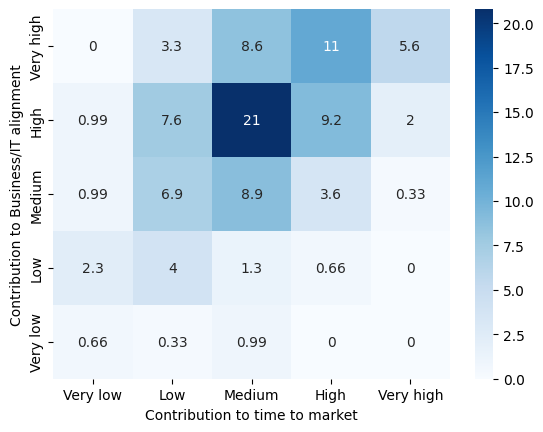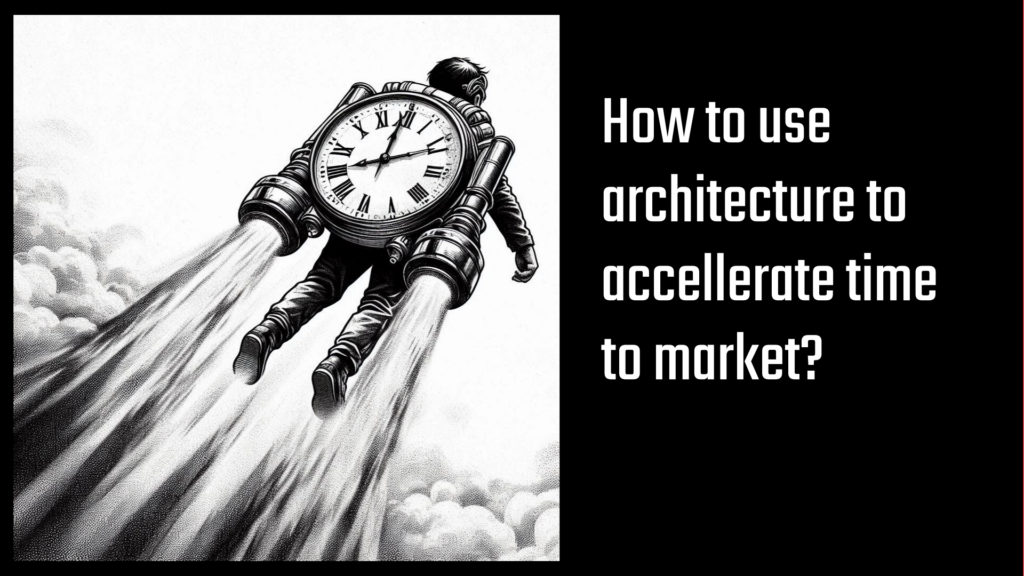Nowadays time to market might be the most important deliverable that the business expects from IT. When I was discussing the challenges the business is facing with IT 15 or 20 years ago the cost of IT were always top of the list. Today the cost are still important but the number one complaint is usually that IT is too slow.
Getting new products in front of the customer is critical and the impact on the topline can be much more substantial than shaving a few percent off the IT budget. What can you do as an architect to improve the time to market?
When I analyzed the data from more than 300 companies for driving factors of the time to market one variable stood out in being tightly linked (Chi² p<0.01) to the time to market – which is the contribution of Enterprise Architecture to the Business/IT alignment as shown in the following exhibit:

Whenever I was running a value stream analysis to better understand the time to market for a company the actual work of the team – most of the time the developers was only a few days. The factor that really drives time to market – in particular in large incumbent companies – is the alignment process. Waiting for the approval by the steering committee, waiting for the service owner to be back from vacation, getting the proxy product owner and the technical SME into a meeting, … all these waiting and alignment times easily add up to weeks and months. I have seen several cases where the waiting time for a change request of 2-3 days was 2-3 months.
What can we do as architects to improve the alignment and thereby the time to market?
- Create transparency: The starting point is always to create clarity of what is driving the delays in the real world. Most steering committee members would not expect that their decision cycle is one of the key drivers of the long cycle time they are complaining about. When creating transparency it is pivotal to use a real example and look at calendars and time sheets and not get fooled by using the theoretical “to be” process.
- Take or create a mission control ownership: Time to market depends on people, processes, technology and many other factors. Each of these factors is controlled by a different person in the company. If we really want to accelerate the process we have to create “mission control” center that takes end-to-end accountability for the process. Enterprise Architecture has to be part of this team as well as portfolio management, HR, Finance and all the other functions that are necessary to solve the problems of the team.
- Align all structures: With this kind of ownership it is possible to align the system structure with the team structure and the decision making structure. From my experience this is as close to the holy grail of time to market as you can get. The team has full ownership of all the systems they need to produce a feature. The team also owns the data and runs the operations for the respective capability and they have a business and an IT person that can make a decision on the spot. When these things are in place the decision can be made within a few minutes rather than days of months.
Accelerating the time to market is important and sometimes if feels as if architecture is not involved enough in the process to actually move the needle. This is sometimes true but very often it is due to self-imposed or corporate-imposed boundaries between different support functions that limit the effectiveness of what an Enterprise Architecture department can do.
Break (or at least loosen) these barriers and you will notice that when several functions work cross-functional as a support team it is not only more effective but also a much more fun way of working.
